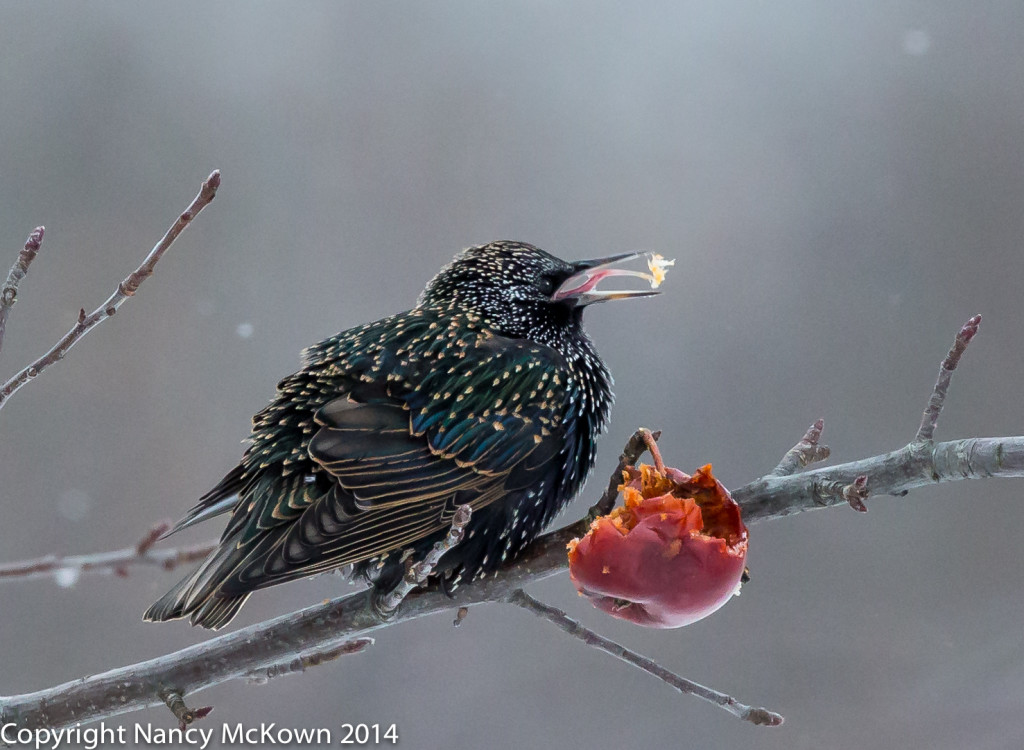It’s Winter. Finding Photographable Moments.
I’m always looking for scenes that spice up my winter bird photography. You have to if you are a photographer living through Michigan’s long, cold and gray winters. One solution is to include a short vacation to warm locales where the sun is always shining and the birds are varied and colorful, where I can walk down the street with my camera wearing only a tank top and shorts and everyone is helpful and interested in what you are doing, and….
But I digress. Back to Michigan. It is possible to find outdoor locations with some color, even when the sun is not shining. Last week, during a brutally cold and snowy week, I came upon an apple orchard, with shriveled, frozen, red apples still clinging to the branches. Long expired fruit and berries often provide the sustenance to draw the birds, even during extremely cold weather. Today, the orchard was being swarmed by European starlings.
I watched as hundreds of these starlings descended in tight flocks on the frozen apples. After 10 minutes or so of gorging themselves, they all left at once in a noisy mob.

ISO 2500; f/7.1; 1/1600 Second
Starlings are Dazzling Birds to Photograph
From a distance, starlings appear black and unimpressive, but they are actually quite dazzling birds, even in their winter plumage. Sporting lots of white spots in the winter, they are approximately 8″ long with short tails and green/purple shiny irridescent feathers. They can be found feeding on pretty much anything available, including fruit, insects, livestock feed, seeds and garbage.
As I watched these starlings through my viewfinder, I saw them successfully decimate the rock hard frozen apples with their sharp beaks. I read later that rather than clamping down with their jaw muscles, they puncture their food with their sharp, closed bills and then spring open their jaw muscles to break the food apart.

Short Work of the Shriveled Apples in the Orchard.
ISO 3200; f/7.1; 1/1600 Second

ISO 3200; f/7.1, 1/1600 Second
Dark and Dreary Days Mean No Catchlights
I do not carry a flash when I’m out in the field. Consequently, my wild bird photos taken on dark, dreary Michigan winter days, don’t often show catchlights in the birds’ eyes. This is a problem, especially when photographing birds that have black eyes (like European Starlings). When looking at portraits, our eyes are naturally and immediately drawn to the eyes in the photo. Without a tiny pinpoint of light sparkling in the corner of their eyes, starlings look blind, evil, even lifeless.
Adding catchlights in post processing solves this problem. It’s easy to do in Lightroom. This link leads to a very good YouTube video by Lightroom expert Laura Shoe for adding catch lights to eyes using Lightroom.
